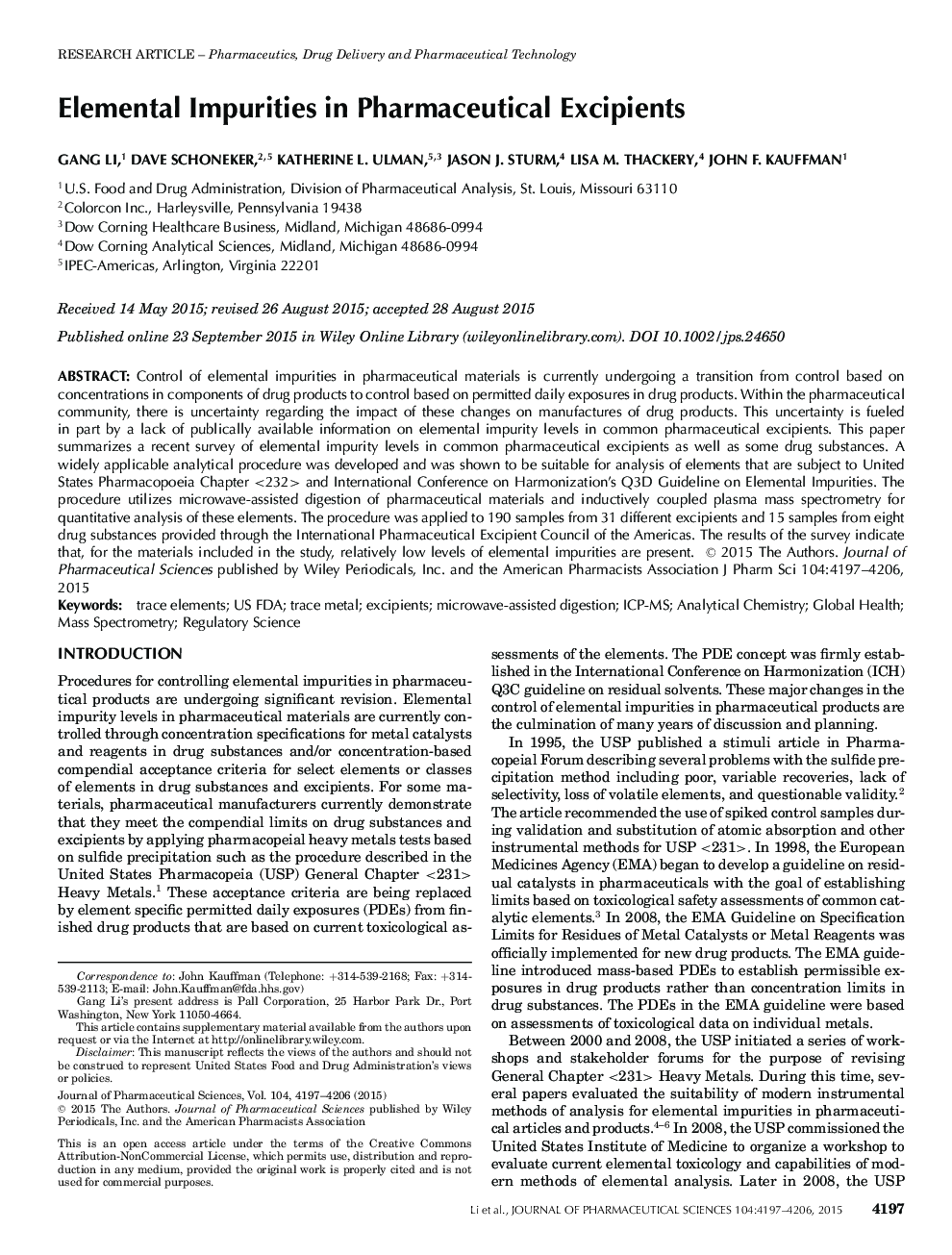| Article ID | Journal | Published Year | Pages | File Type |
|---|---|---|---|---|
| 10161945 | Journal of Pharmaceutical Sciences | 2015 | 10 Pages |
Abstract
Control of elemental impurities in pharmaceutical materials is currently undergoing a transition from control based on concentrations in components of drug products to control based on permitted daily exposures in drug products. Within the pharmaceutical community, there is uncertainty regarding the impact of these changes on manufactures of drug products. This uncertainty is fueled in part by a lack of publically available information on elemental impurity levels in common pharmaceutical excipients. This paper summarizes a recent survey of elemental impurity levels in common pharmaceutical excipients as well as some drug substances. A widely applicable analytical procedure was developed and was shown to be suitable for analysis of elements that are subject to United States Pharmacopoeia Chapter <Â 232Â >Â and International Conference on Harmonization's Q3D Guideline on Elemental Impurities. The procedure utilizes microwave-assisted digestion of pharmaceutical materials and inductively coupled plasma mass spectrometry for quantitative analysis of these elements. The procedure was applied to 190 samples from 31 different excipients and 15 samples from eight drug substances provided through the International Pharmaceutical Excipient Council of the Americas. The results of the survey indicate that, for the materials included in the study, relatively low levels of elemental impurities are present.
Keywords
Related Topics
Health Sciences
Pharmacology, Toxicology and Pharmaceutical Science
Drug Discovery
Authors
Gang Li, Dave Schoneker, Katherine L. Ulman, Jason J. Sturm, Lisa M. Thackery, John F. Kauffman,
